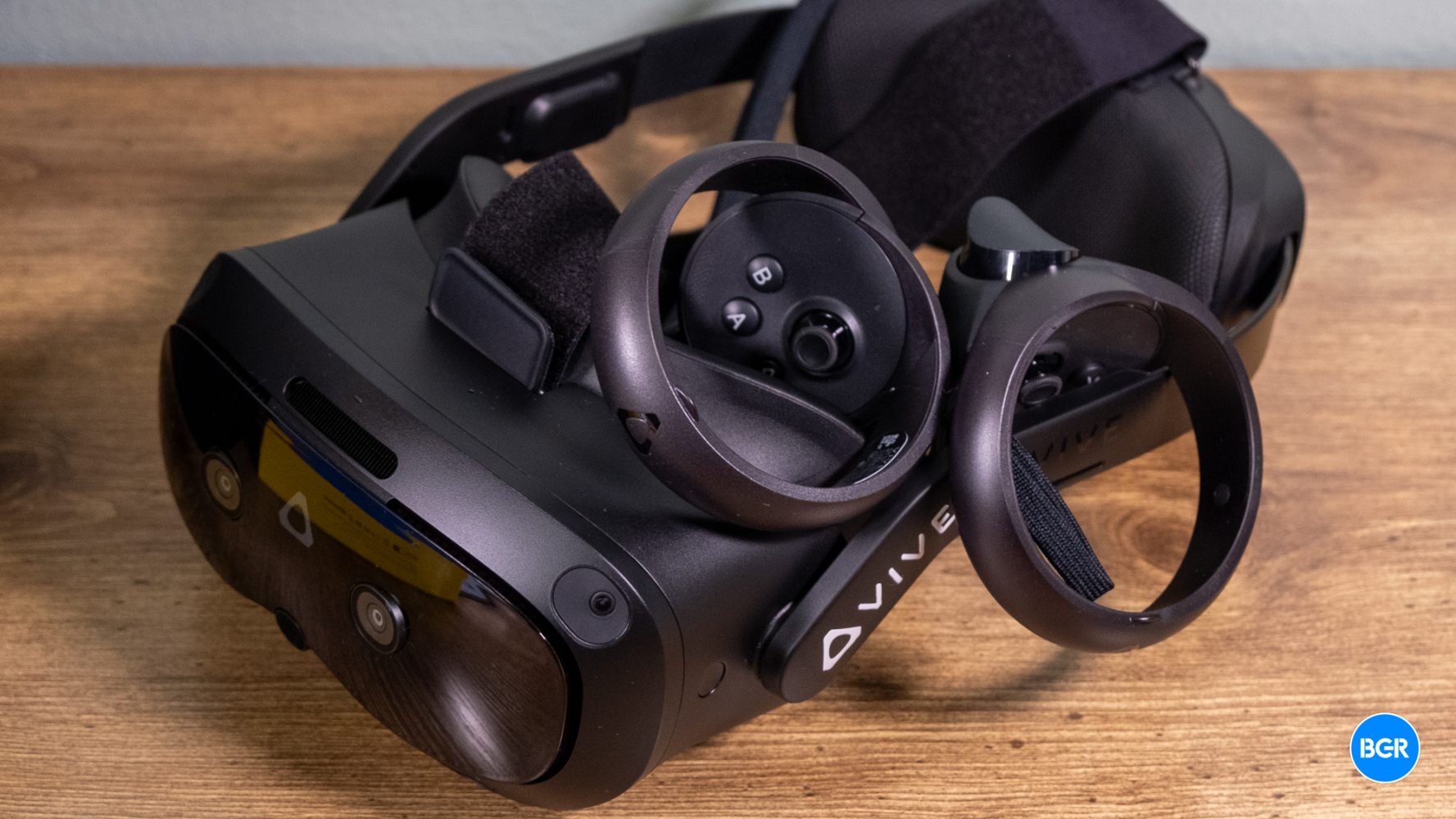
The HTC Vive Focus Vision is a versatile standalone headset, but it’s let down by older lenses and a high price. The world of VR headsets is in a bit of a weird spot. Meta has been plugging along nicely, but with and Quest 3S, has seemingly turned away from the so-called “pro” high-end concept in favor of a more consumer-friendly and affordable approach.
is on the complete other end of that spectrum, delivering the highest-end VR experience you can get right now, at a very high price. And by all accounts, Apple hasn’t quite landed in the VR market as much as it might have hoped. Meta and Apple aren’t the only two players in the game.
The HTC Vive Focus Vision is the latest in a line of HTC Vive branded virtual reality headsets, built to offer a premium experience overall and coming at a relatively high price. The Vive Focus Vision isn’t necessarily built to compete with the $500 Meta Quest 3. But given that most customers don’t quite know exactly what they want from a VR headset and that Meta has built out a relatively expansive ecosystem of apps and services, the $999 Focus Vision effectively has to compete anyway.
Where does the HTC Vive Focus Vision fit in the world of VR headsets, and is it worth buying when there are well-regarded models that cost half the price? I’ve been using it for a while now to find out. HTC Vive Focus Vision specs A bulky design and hot-swappable battery As far as VR headsets go, the HTC Vive Focus Vision is relatively bulky, but the bulkier build does give the headset some additional features and arguably better performance. Sign up for the most interesting tech & entertainment news out there.
By signing up, I agree to the and have reviewed the The headset is all black, with a number of cameras and sensors dotted around its face. There are two 16-megapixel cameras on the front for stereoscopic passthrough, with four other cameras for exterior tracking. On the inside of the mask are two more cameras used for eye-tracking.
The headset has a head strap that you’ll adjust to make sure weight is decently distributed on the top of your head, and it can be loosened or tightened on the back of your head. The rear pad of the headset also houses the battery compartment, and you can remove and replace the battery as needed. It’s hot-swappable, too, which is handy.
Generally, the headset felt decently strong despite being largely made from plastic. Certain components did feel slightly cheap but not overly so, and I never worried that I would break the headset. The bulkiness of the headset unfortunately translates to a relatively heavy feel, and while you’ll get used to how it feels on your head, I found that it could get a little hot and uncomfortable after around 30 minutes of usage.
The counterbalance of the battery on the back of the head does help a little, but despite that, I still found to be more comfortable, considering its slimmer and lighter build. Disappointing visuals and high-tech control methods The HTC Vive Focus Vision offers two 2448 x 2448 LCD displays, with a maximum refresh rate of 90Hz. Given the price range, I was a little disappointed to see LCD screens built into this headset, as OLED displays would have made for deeper black levels and more natural-looking contrast.
The 90Hz refresh rate is also a little low for a headset in this price range. To be clear, the resolution is technically higher than what’s on offer by the Quest 3, and in theory that should translate to a more crisp and more detailed image overall. In practice, I didn’t quite find that to be so, though.
Perhaps that’s down to the aging lens design in use by HTC. The headset uses the Fresnel lens design, which is a slightly older optical system that can result in visual rays appearing in the image, something I experienced quite a bit. This isn’t something that you’ll experience on the Quest 3.
The pass-through tech was only fine as well. The cameras were decent enough, but I found that pass-through on the Vive Focus Vision wasn’t as crisp or as detailed as the Quest 3. Of course, the Quest 3 doesn’t hold a candle to the Apple Vision Pro, but the Vision Pro is a different story, given its price point.
Pass-through on the Focus Vision is fine for a moment, but it’s certainly not something you would want to stay in over longer periods of time. The headset supports both hand tracking and eye tracking, both of which seem to work pretty well. The eye tracking system was decently responsive, though perhaps not quite as impressive as what’s offered by the Apple Vision Pro.
Aging performance Under the hood, the HTC Vive Focus Vision offers an aging Qualcomm Snapdragon XR2 Gen 1 platform, which means that gamers looking for a VR headset to game on may find themselves pushing performance. It’s a little disappointing that the headset has this aging chip, given the fact that newer platforms are available. That said, to be fair, I never really found the headset to stutter or lag, but it’s a little more likely that it would start to do so as it ages.
It’s important to note, though, that the headset isn’t just designed for standalone use – it’s also built for PC VR gaming. It supports lossless PC VR through a DisplayPort adapter, making it arguably the go-to for gamers who want to run VR games from their computer. It worked quite well at this, allowing users to get a lossless VR experience when tethered to their computer.
The lossless aspect is important here, as it means that you won’t get any video compression or artifacts in your view. I found this to be the case, and while I still experienced some blurriness, the image generally looked quite good. Of course, to achieve the best performance, you will need a relatively high-performing PC with a powerful graphics card.
That’s especially true given the fact that your computer will have to drive images that are twice the 2448 x 2448 resolution so that there’s a distinct image for each eye. Relatively simple software As mentioned, the HTC Vive Focus Vision is built to be a standalone VR headset as well as a tethered headset, which means that it has its own software built into it. The inspiration from the software built into the Quest 3 and other Quest headsets is very apparent, and while not as fully featured, I found that it was perfectly easy to navigate.
When it comes to standalone games, you’ll be able to access software from the Viveport store, which offers a decent selection of games but nowhere near the number of titles found on Quest headsets. Very few games, in general, support the eye-tracking technology, though hopefully, that will change over time. Conclusions The HTC Vive Focus Vision is in a slightly weird position.
The headset is versatile, given its usability as both a standalone and a PC-connected device. While it does a good job of displaying PC VR games, its dated lens design takes away from the overall visual experience. If you’re looking for a headset that can do everything decently well, then the Vive Focus Vision may be for you, but keep in mind that you’ll have to pay to get it.
The biggest competition in the standalone headset space comes from Meta with the Quest 3. Frankly, those looking for a headset for standalone use only should ignore the Focus Vision and instead go for the Quest 3. It’s half the price, and while it has a lower-resolution display, I found that the optics in look much better than those found in the Focus Vision.
That’s not to mention the much larger library that Meta has built up. Even those who do want something to use as both a standalone and a tethered headset should consider the Quest 3. However, keep in mind that you won’t get a lossless PC VR experience on the Quest 3 like you will on the Focus Vision.
Maybe, but if you want a standalone headset, the Quest 3 is head and shoulders above the Focus Vision at half the price..












